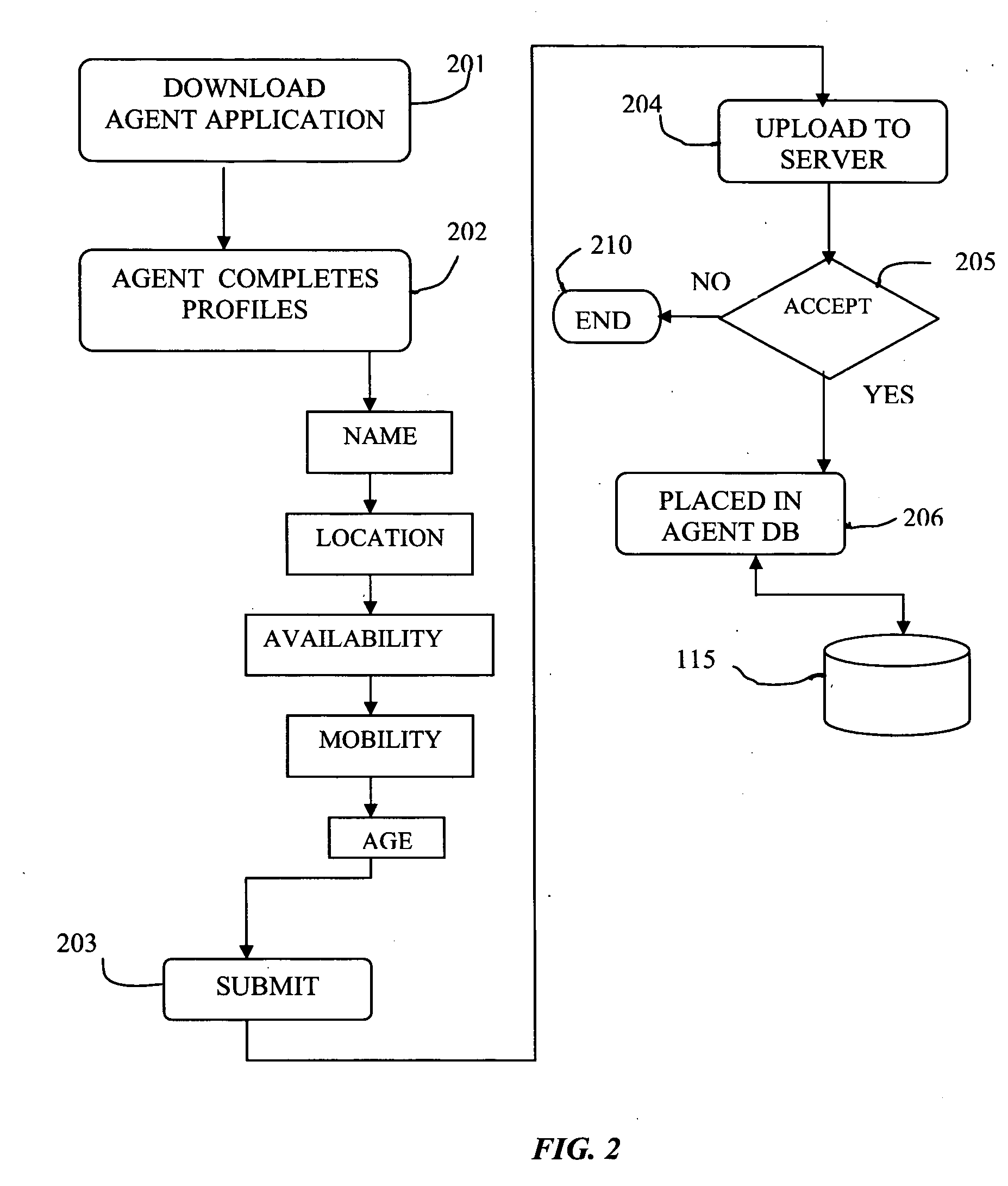System and method for collecting and disseminating human-observable data
a human-observable data and system technology, applied in the field of human-observable data system and method, can solve the problems of large amount of work, slowness of the collection of human-observable data, and high cost of collecting human-observable data, and achieve the effect of convenient access
- Summary
- Abstract
- Description
- Claims
- Application Information
AI Technical Summary
Benefits of technology
Problems solved by technology
Method used
Image
Examples
Embodiment Construction
[0031] The figures depict procedures and currently available technology to empower unskilled agents as the sensing elements of a system to collect information valuable to various users, herein called clients. The agents at one end and the clients at the other are supported and connected through cell phones, wireless and wired networks and computers to deliver this information, rapidly, inexpensively and pervasively.
[0032]FIG. 1 illustrates the components of the system of one embodiment of the present invention in which a plurality of agents, equipped with wireless communication devices, are incorporated into the network. Agents 100 and 101 use cell phones or other such wireless devices 102 and 103, equipped each with GPS or similar location-aware modules 104 and 105, respectively. Agents may also utilize various ancillary input devices to assist in efficient data collection. For example, devices 106 and 107 may include bar code scanners, RFID tags, wireless or infrared-linked devic...
PUM
 Login to View More
Login to View More Abstract
Description
Claims
Application Information
 Login to View More
Login to View More - R&D
- Intellectual Property
- Life Sciences
- Materials
- Tech Scout
- Unparalleled Data Quality
- Higher Quality Content
- 60% Fewer Hallucinations
Browse by: Latest US Patents, China's latest patents, Technical Efficacy Thesaurus, Application Domain, Technology Topic, Popular Technical Reports.
© 2025 PatSnap. All rights reserved.Legal|Privacy policy|Modern Slavery Act Transparency Statement|Sitemap|About US| Contact US: help@patsnap.com



